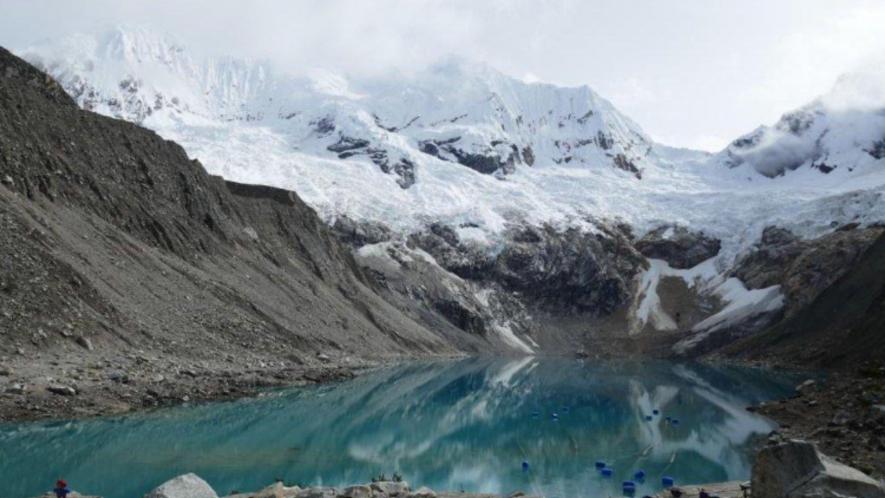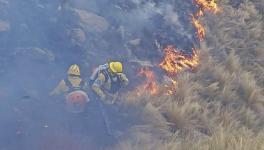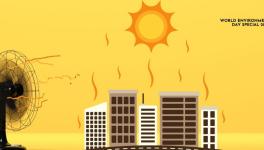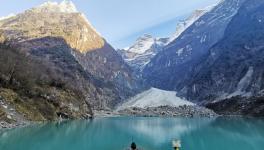9 mn in High Mountain Asia Under Threat due to Melting Glaciers

Image source: Internet. Used for representation only.
That global warming and climate change threaten millions worldwide is no more a revelation. The research thrust now is on mitigation and climate policies and quantification of the dangers. Quantification signifies how many countries and people in what time are going to face the worst of conditions. In such an effort, a recent study carried out by scientists UK and New Zealand scientists has suggested that more than 15 million people are under immediate threat due to glacia melting. The study was published recently in Nature Communication.
More than half of those residing in India, Pakistan, China and Peru and 9 million-plus people across High Mountain Asia reside at risk of floods from glacial lake outbursts. Out of this, 5 million reside in northern India and Pakistan, the study reveals. Experts consider the study the first global assessment of areas under severe risk due to glacial melting.
People in the iciest regions live amid the looming danger of glacial lake outburst floods, where vast volumes of water, resembling a wall moving quickly and forcefully emanating from the melting glaciers, inundates downstream areas.
Remember what happened in Pakistan last spring—during a record heat wave, the Shishpar glacier, in the northern part of the country, started unfreezing with the melted ice flowing hurriedly nearby a lake and eventually overflowing from it causing a flash flood. The flash flood destroyed a bridge and damaged downstream villages.
Tom Robinson, the corresponding author of the study, of the School of Earth and Environment, University of Canterbury, Christchurch, New Zealand, said, “It sounds quite dire but it doesn’t need to be. With thoughtful investment and careful planning, we can avoid these flooding disasters.”
Glacial lake outburst floods “pose a globally significant hazard, and that hazard appears to be getting significantly worse with climate change,” he added.
Floods resulting from glacial lake outbursts have occurred since glaciers existed, but the risk has intensified in recen decades—thanks to global warming. The warming planet causes the glaciers to melt fast and the additional water causes severe flooding.
Previous study conducted in 2020 suggested that volumes of lakes formed as a result of glacier disintegration worldwide has jumped by more than 50% in 30 years. The 2020 study was based on satellite data. Notably, the Earth has warmed on an average 1.2 degrees Celsius than pre-industrial times, but the high-mountain regions have warmed twice faster as this.
Glacier lakes are unstable owing to their composition. These lakes are made up of ice and sediments of loose rocks and debris. Water accumulating in these unstable structures can burst to cause massive floods in the downstream areas.
Caroline Taylor, the co-author of the study, of the School of Geography, Politics and Sociology, Newcastle University, UK, said, “It’s not the areas with the largest number of most rapidly growing lakes that are most dangerous. Instead, it is the number of people, their proximity to a glacial lake, and, importantly, their ability to cope with a flood that determines the potential danger.”
The study researchers considered three sets of data. First, the number and condition of lakes fed by meltwater. Second, the number of people who reside within the range of 50 km of glacial lake basin. Third, how the people are prepared to face the disaster when it arrives.
The researchers found that around 90 million people live in 1,089 glacial lake basins in 30 countries. Notably, the analyses revealed that 15 million people reside within a rang of one km of the track where an outburst flood is likely to occur.
High mountain Asia, which is home to the Himalayas, was found to be the most dangerous region with over 9 million people residing near 2,211 lakes. Pakistan and China are at the highest risk globally with 2 million and 1 million people, respectively, exposed to the lakes.
Interestingly, in the high Arctic region, such as Greenland, the danger is the lowest. This is owing to the scarce population in the region even though it has the highest numbers of glacial lakes worldwide. The research found that the Andes sits at high risk after High Mountain Asia with Peru in the third position of high-risk countries.
Get the latest reports & analysis with people's perspective on Protests, movements & deep analytical videos, discussions of the current affairs in your Telegram app. Subscribe to NewsClick's Telegram channel & get Real-Time updates on stories, as they get published on our website.
























